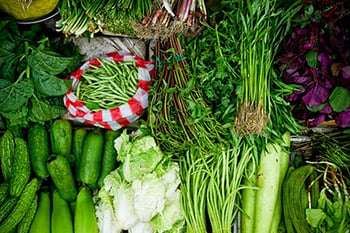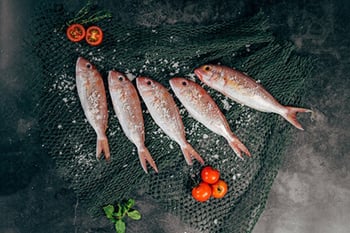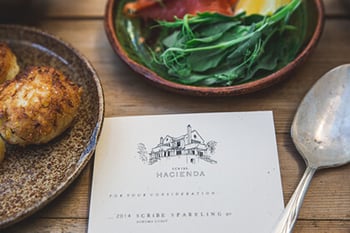It's probably important to start with mentioning that I am on an island. This means getting fresh ingredients is all the more difficult.
Fresh ingredients The biggest challenges are getting all our ingredients as fresh as possible. As we get all our ingredients from the market where the best ingredients come from the mainland, we need to be at the market first before anyone else in order to get the best and freshest ingredients that still look good and taste the way they should. We have a no waste policy so all food waste we re-use and change into compost to aid our vegetable garden and to plant more trees and vegetation around the property.
The biggest challenges are getting all our ingredients as fresh as possible. As we get all our ingredients from the market where the best ingredients come from the mainland, we need to be at the market first before anyone else in order to get the best and freshest ingredients that still look good and taste the way they should. We have a no waste policy so all food waste we re-use and change into compost to aid our vegetable garden and to plant more trees and vegetation around the property.
Fresh fish The second biggest challenge is to get fresh fish every day. We are lucky enough to have two spear fishermen on the premises that do our fishing. In this way, we are more sustainable, and we know that the fish doesn't get any fresher. The main problem with this is the weather. Bad weather means no fish, and we need to find ways around this - either going without fish for a few days or if we need fish, we send the spear fishermen to the other side of the island. This is so that we can have only the best for our guests.
The second biggest challenge is to get fresh fish every day. We are lucky enough to have two spear fishermen on the premises that do our fishing. In this way, we are more sustainable, and we know that the fish doesn't get any fresher. The main problem with this is the weather. Bad weather means no fish, and we need to find ways around this - either going without fish for a few days or if we need fish, we send the spear fishermen to the other side of the island. This is so that we can have only the best for our guests.
Humidity and keeping food fresh
The third greatest challenge is heat. It is always hot on the island and humidity can range from 70% to 95%, and this makes life in the kitchen even hotter. Needless to say, we have a lot of cornstarch on hand for these situations.
But keeping all the produce that we get in fresh and to keep them at the right temperatures for health and safety reasons and to make sure that our fruit when not ripe yet, ripens slowly and not to fast, by having a ripening room. This way we monitor and control, that the fruit doesn't over ripen or goes off completely.
We have a walk-in fridge that stays at a steady temperature of 2 to 5 degrees. Now, this might seem very cold, but any warmer and we will lose everything in the walk-in fridge within 24 hours.
Clean water Running fresh, clean water is a challenge. Water is a scarce and important mineral that a kitchen can't survive without. A 5000L tank has been donated solely to the kitchen to make sure that the kitchen has adequate amounts of water. While we do have water saving procedures in place, we always keep in mind that you only use what you need. In tough times we even measure our water before distributing it through the kitchen - a very big pain, but necessary.
Running fresh, clean water is a challenge. Water is a scarce and important mineral that a kitchen can't survive without. A 5000L tank has been donated solely to the kitchen to make sure that the kitchen has adequate amounts of water. While we do have water saving procedures in place, we always keep in mind that you only use what you need. In tough times we even measure our water before distributing it through the kitchen - a very big pain, but necessary.
Menu inspiration The fifth biggest challenge is the hardest one of all and chefs all over the world sometimes struggle to get enough inspiration to come up with a good menu. Menus to suit every guest that stay here's every need and want.
The fifth biggest challenge is the hardest one of all and chefs all over the world sometimes struggle to get enough inspiration to come up with a good menu. Menus to suit every guest that stay here's every need and want.
However the challenge isn't making one menu that lasts a season, the problem is that the menu's for lunch and dinner change every single day, we might repeat one dish one's every 2 months or so — the menu's consists of 3 starters, at least 3 mains and 3 desserts.
These menus are all created, using seasonality, the temperature of the day, the guests that stay with us for a certain period, the freshness of produce and the strength, knowledge and experience of the kitchen team of the day. The menus are a collaboration of ideas of each senior chef, and as of that the menu's keep changing every day.
All significant challenges, but all challenges that we overcome as a team. If you would like to learn more about how your restaurant can become more sustainable, check out 6 Steps To Increase Your Restaurant Sustainability
.png?width=1571&height=766&name=CFD%20knife%20and%20fork%20logo%20(carbonfriendlydining.org).png)


